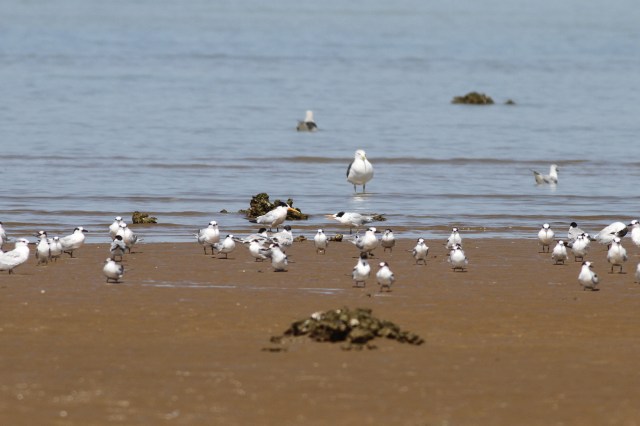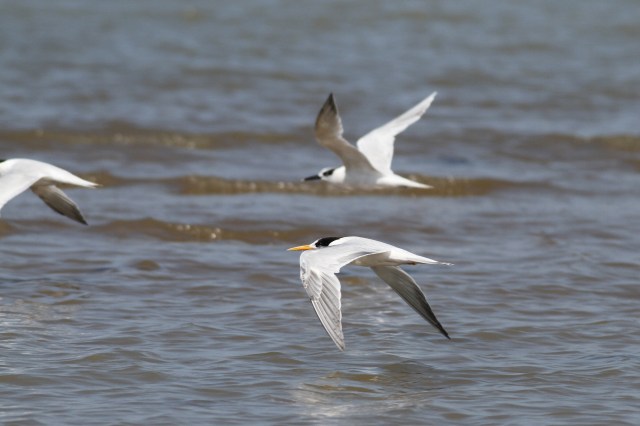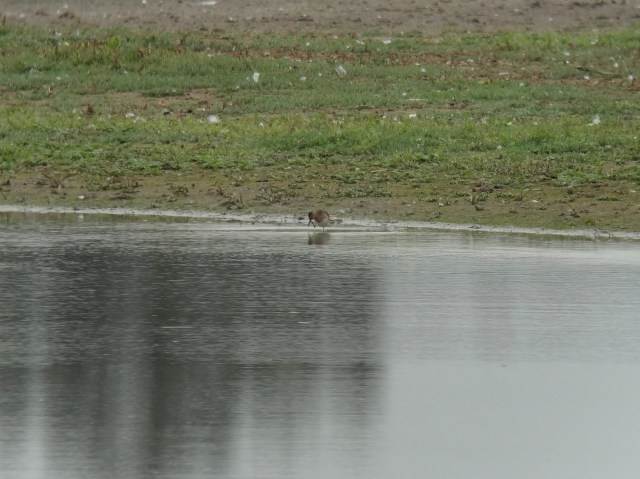September 1989 Rudston, East Yorkshire, I saw my first Lesser Grey Shrike, yesterday near Leiston, Suffolk, I see my second.
Having done a few jobs around the house/allotment in the morning, by lunchtime I was beginning to get restless. The weather hasn’t been great for ‘small bird’ migration so far this September but a few things have started to arrive here in East Anglia, like the Lesser Grey Shrike which turned up last Sunday. With nothing better (more interesting ) to do I decide to have a go for it.
Although it’s no great distance from Cromer to Leiston, it’s a slow drive across Norwich and through the lanes of Suffolk, so it was half past three when I got to the site. The first guy I see coming the other way is looking grumpy – not a good sign! Apparently the bird was seen a couple of hours ago but ‘it flew off high over the woods’ and nothing since. Is it just me or is there a rising trend of premature pessimism amongst birders these days – how often do you see on BirdGuides a ‘sad face’ report and then, ten minutes later, such and such a bird is ‘back in is usual spot and showing well‘! Is it that we invest so much emotional energy in seeing rare/scarce birds that we have to psychologically brace ourselves against disappointment or is it just that those who witness these supposedly ‘last sightings’ want to rub it in the faces of the poor unfortunates who arrive too late? Either way my spirits drop a little but I carry on looking. Nothing for ten minutes, just a lot of empty fence posts, where this rare bird from the south and east of Europe once was – images of the numerous photos of the bird, posted on various websites, beginning to pop into my brain to tease me. A guy in his forties walks by, cheerfully enquiring if we’ve seen the bird, and he tells us about an Arctic Skua on the nearby beach at Sizewell.
Then the shout goes up – the bird is back, a little further up the track. We hurry to the spot and there is the shrike, sat atop a hawthorn bush, catching insects…pheew! The same guy then casually remarks that his first Lesser Grey was in the late eighties, somewhere near Spurn – there is a sudden connection between us. Same bird, same experience… just a quarter of a century separating the two. What happened to the two and a half decades that have gone by between these two events – and why do birders measure their lives out in this way – by the birds they’ve seen? I’ve no idea, but ‘first’ or ‘second’, it was a lovely bird to see….. and more than just a bird!
Lesser Grey Shrike, with Sizewell B nuclear power station in the background
Post Script: As I write this post, three large skeins of Pink-footed Geese have flown over – watch out, winter’s coming!









































